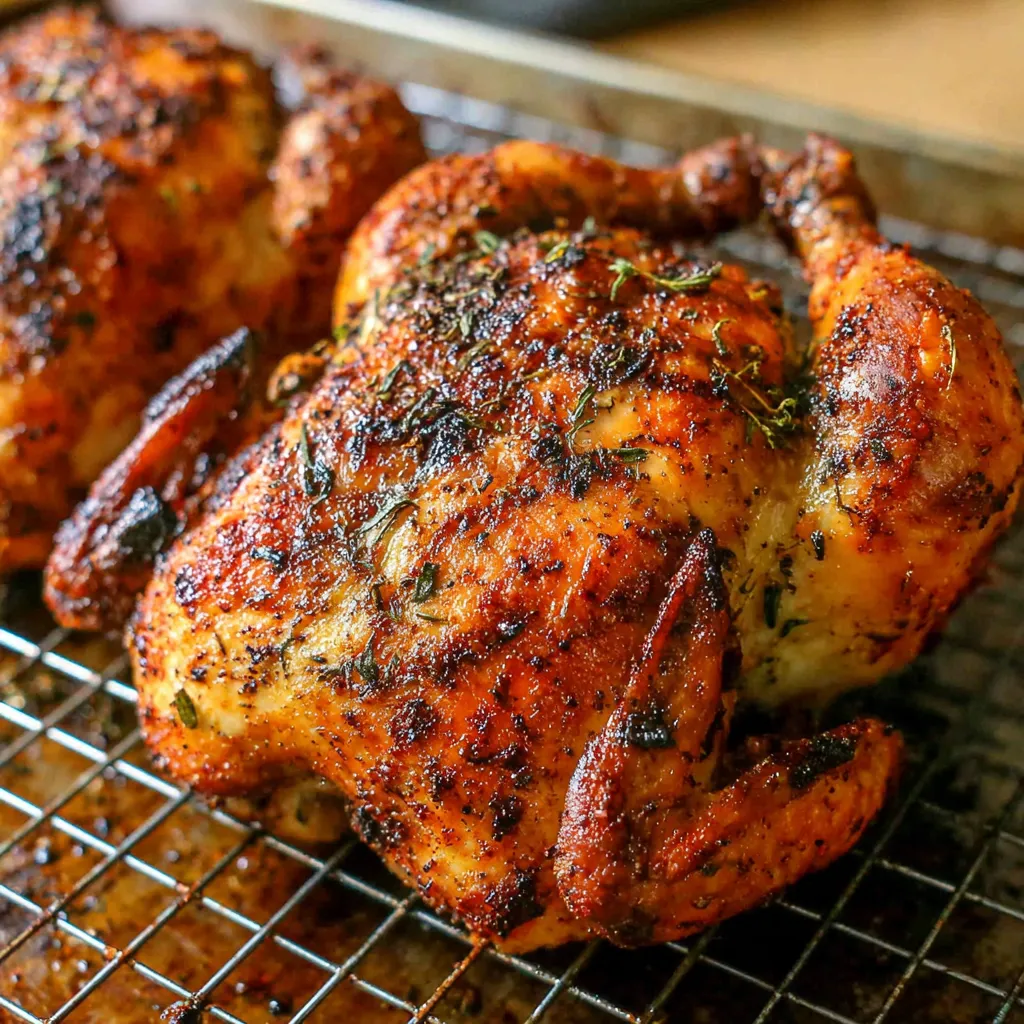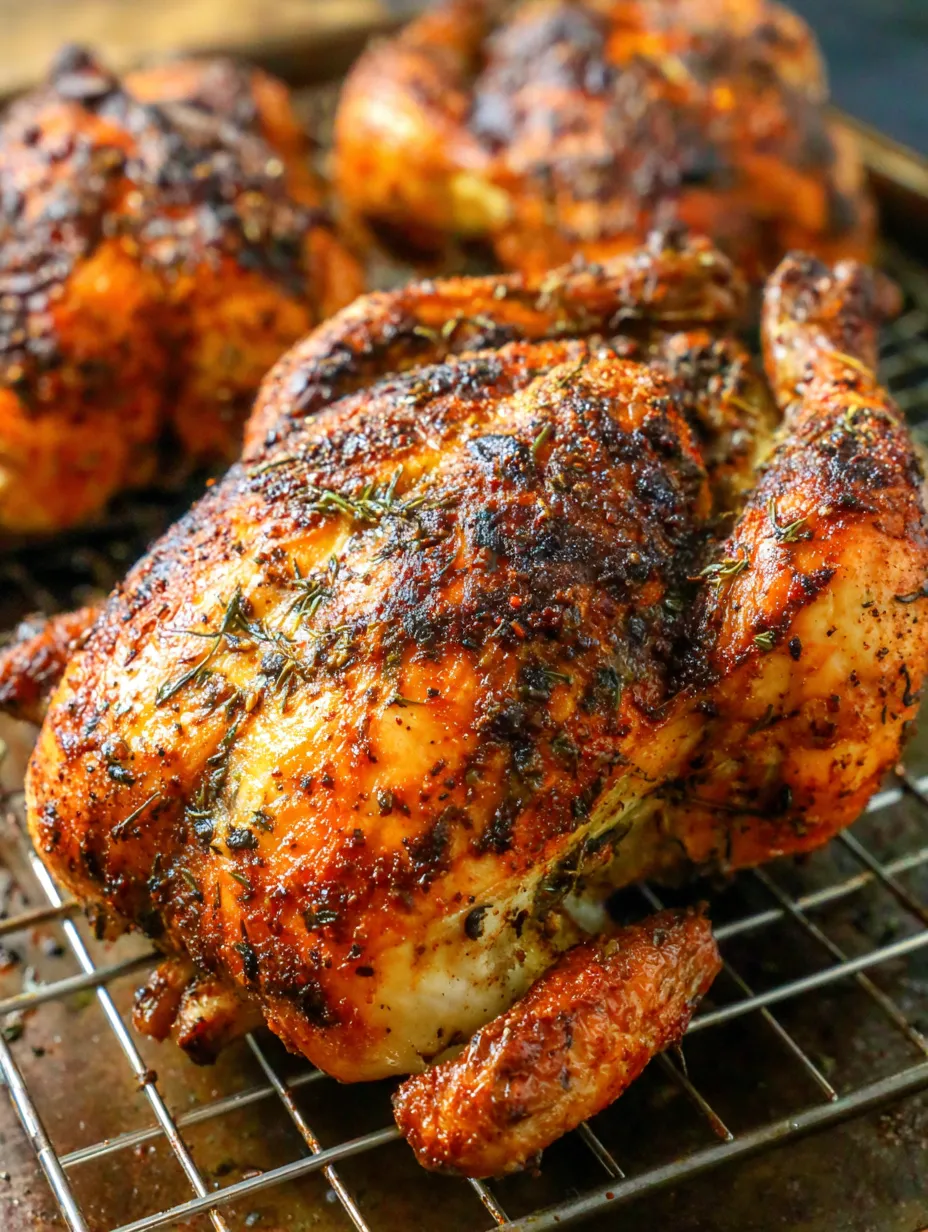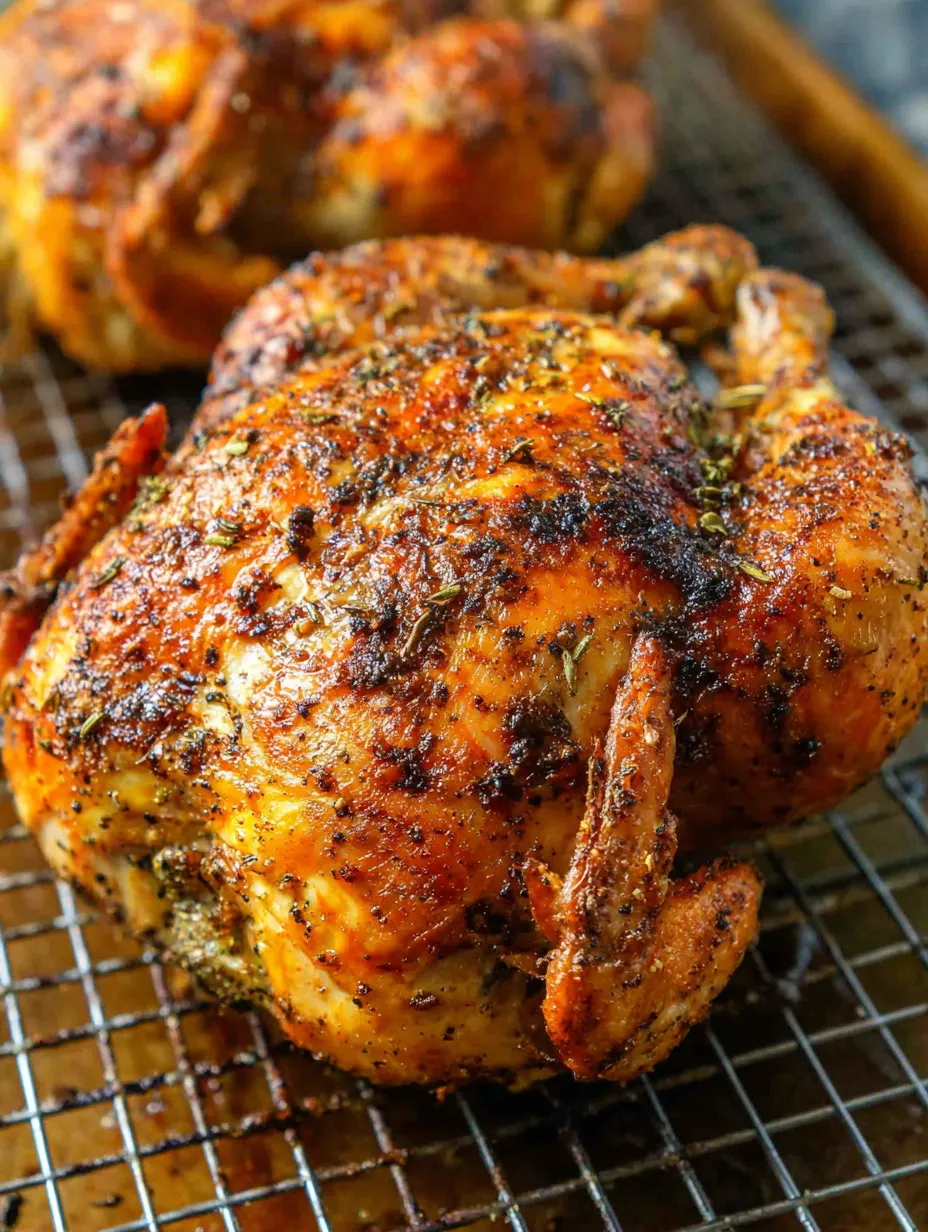 Pin
Pin
This homemade rotisserie chicken is the answer to juicy tender meat with perfectly savory crispy skin all from your own oven without any fancy gadgets. It is my favorite recipe when I need a hands-off main that feels special but is secretly effortless and budget friendly. The deep flavor mimics store-bought rotisserie chicken but the freshness and custom spices take it up a notch.
When I first tested this for a Sunday dinner, my family declared it better than any store-bought chicken. Now it is our go-to for meal prep and quick comforting dinners all week.
Ingredients
- Whole chicken: about three to four pounds Choose one with plump breasts and clean skin for best texture
- Canola oil or melted butter: Coats and crisps the skin I usually use butter for a rich roasted taste
- Kosher salt: Key for flavor and helps lock in moisture Use a generous pinch and always check that it is fresh
- Black pepper: Brightens the dry rub Select freshly cracked for bigger flavor
- Garlic powder: Brings a robust savory kick If you can find granulated garlic use that for even coating
- Onion powder: Adds depth and a subtle sweetness Always check it is lump free for best results
- Paprika: This gives color and smoky notes Use Hungarian or Spanish if you have it
- Dried thyme leaves: Contributes an herby background Make sure it is fragrant before adding
- Cayenne pepper: Just a touch for warmth Adjust up or down to your heat liking
Step-by-Step Instructions
- Prep the Oven and Pan:
- Set your oven to three hundred degrees Fahrenheit. Place a rack in your roasting pan then add just enough water to barely cover the bottom. This keeps the juices from burning and creates gentle steam under the chicken for tenderness
- Mix the Spice Rub:
- Blend together salt pepper garlic powder onion powder paprika dried thyme and cayenne in a small bowl. Whisk well so every spice is evenly distributed. This is what makes the signature rotisserie flavor
- Season the Chicken:
- Pat your chicken dry thoroughly so the skin crisps nicely. Brush the skin all over with oil or butter ensuring every inch is coated. Generously sprinkle the mixed spices everywhere even inside the cavity and rub for good adhesion
- Roast the Chicken:
- Place the chicken breast side down on the rack. Insert an oven thermometer into the thickest part of the thigh if you have one. Slide the pan into the oven and roast undisturbed until the thermometer reads one hundred sixty two to one hundred sixty five degrees Fahrenheit at the thigh. Depending on chicken size this can take two and a half to three hours
- Rest the Chicken:
- Transfer the roasted chicken to a board or platter and cover loosely with foil. Let it rest for ten to twenty minutes before carving. This step is crucial for juicy meat that holds on to its flavorful juices rather than spilling them when sliced
- Serve or Store:
- Plate your beautiful roast chicken whole or carve and use for any recipe that calls for cooked chicken. Leftovers can be shredded or chopped for all your favorite meals
 Pin
Pin
I always appreciate how the smoky sweet paprika transforms even the simplest chicken into something craveable. My children fight over the crispy bits off the top which reminds me of family dinners growing up when we would all race for our favorite pieces as soon as the platter hit the table.
Storage Tips
Refrigerate any leftover chicken wrapped tightly for up to three days. For longer storage shred or cube the meat and freeze it in an airtight container for up to three months. Save the carcass for homemade broth
Ingredient Substitutions
Butter adds classic flavor but olive oil also works well for crisp skin. If you like smoky heat use smoked paprika. Try rosemary or sage instead of thyme for a twist. No roasting rack needed just roast directly in a pan and turn once halfway for color
Serving Suggestions
Serve your rotisserie chicken with roasted potatoes or a crisp green salad. Use leftovers for tacos casseroles or chicken salad. This is perfect for meal prep or serving guests for a stress free main
 Pin
Pin
Cultural Context
Rotisserie chicken as we know it became popular in American supermarkets in the nineteen nineties but home cooks have been roasting whole birds for centuries. The method keeps meat tender and is beloved for its economy and versatility
Recipe FAQs
- → How do I ensure my chicken stays juicy?
Roast the chicken at a low temperature and let it rest before carving. This helps keep the meat moist and flavorful.
- → Can I use a different oil instead of canola?
Yes, melted butter or olive oil both work well for brushing the chicken skin before roasting.
- → What if I don’t have a roasting rack?
Place the seasoned chicken directly in a roasting pan, breast side up, and skip adding water to the pan.
- → How do I know when the chicken is cooked?
Use a digital thermometer to check that the thickest part of the thigh reads 165℉ (74℃) before removing from the oven.
- → How can I store leftovers?
Keep leftover chicken refrigerated for up to 3 days, or freeze shredded or cubed meat for up to 3 months.
- → Can I make homemade stock with the leftovers?
Absolutely! Save the chicken bones and use them to prepare a rich, homemade chicken stock.
